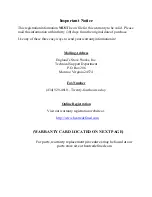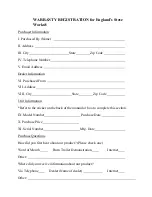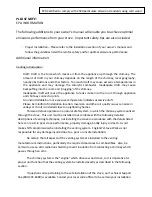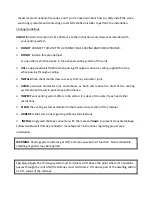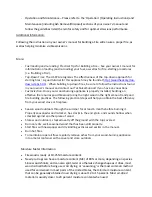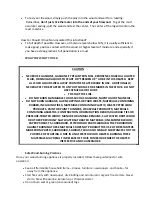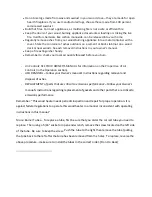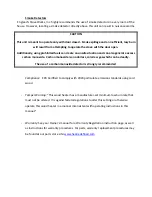
‐
Operation
and
Maintenance
–
Please
refer
to
the
‘Operation’
(Operating
Instructions)
and
Maintenance
(including
Ash
Removal/Disposal)
sections
of
your
owner’s
manual
and
follow
the
guidelines
listed
therein
for
safety
and
for
optimal
emissions
performance.
Additional
Information:
Following
the
instructions
in
your
owner’s
manual
for
Building
a
Fire
will
ensure
a
proper
fire,
as
well
as
helping
minimize
visible
emissions.
More:
‐
Fuel
loading
and
re
‐
loading:
Practical
Tips
for
Building
a
Fire
–
See
your
owner’s
manual
for
information
on
loading
(and
re
‐
loading)
your
fuel,
as
well
as
for
fire
‐
starting
procedures
(i.e.
‘Building
a
Fire’).
‐
Top
‐
Down
Fires:
The
US
EPA
recognizes
‘the
effectiveness
of
the
top
‐
down
approach
for
starting
fires.’
A
good
tutorial
for
this
approach
may
be
found
at
http://woodheat.org/top
‐
down
‐
steps.html
.
When
building
top
‐
down
fires,
be
sure
to
follow
the
instructions
found
in
your
owner’s
manual
and
contact
our
Technical
Support
if
you
have
any
questions.
‐
Fuel
Selection:
Once
your
wood
‐
burning
appliance
is
properly
installed,
building
an
effective
fire
requires
good
firewood
(using
the
right
wood
in
the
right
amount)
and
good
fire
building
practices.
The
following
practical
steps
will
help
you
obtain
the
best
efficiency
from
your
wood
stove
or
fireplace.
Season
wood
outdoors
through
the
summer
for
at
least
6
months
before
burning
it.
Properly
seasoned
wood
is
darker,
has
cracks
in
the
end
grain,
and
sounds
hollow
when
smacked
against
another
piece
of
wood.
Store
wood
outdoors,
stacked
neatly
off
the
ground
with
the
top
covered.
Burn
only
dry,
well
‐
seasoned
wood
that
has
been
split
properly.
Start
fires
with
newspaper
and
dry
kindling
as
discussed
earlier
in
the
manual.
Burn
hot
fires.
To
maintain
proper
airflow,
regularly
remove
ashes
from
your
wood
‐
burning
appliance
into
a
metal
container
with
a
cover
and
store
outdoors.
Moisture
Meter
Information
Firewood
is
ready
at
10
‐
25%
moisture
content.
Newly
‐
cut
logs
can
have
a
moisture
content
(MC)
of
80%
or
more,
depending
on
species.
Since
wood
shrinks,
and
can
also
split,
twist
or
otherwise
change
shape
as
it
dries,
most
wood
is
dried
before
being
used.
Air
drying,
or
‘seasoning,’
is
the
most
common
method
used
for
cord
wood.
In
most
parts
of
the
United
States,
the
minimum
moisture
content
that
can
be
generally
obtained
in
air
drying
is
about
12
to
15
percent.
Most
air
‐
dried
material
is
usually
closer
to
20
percent
moisture
content
when
used











